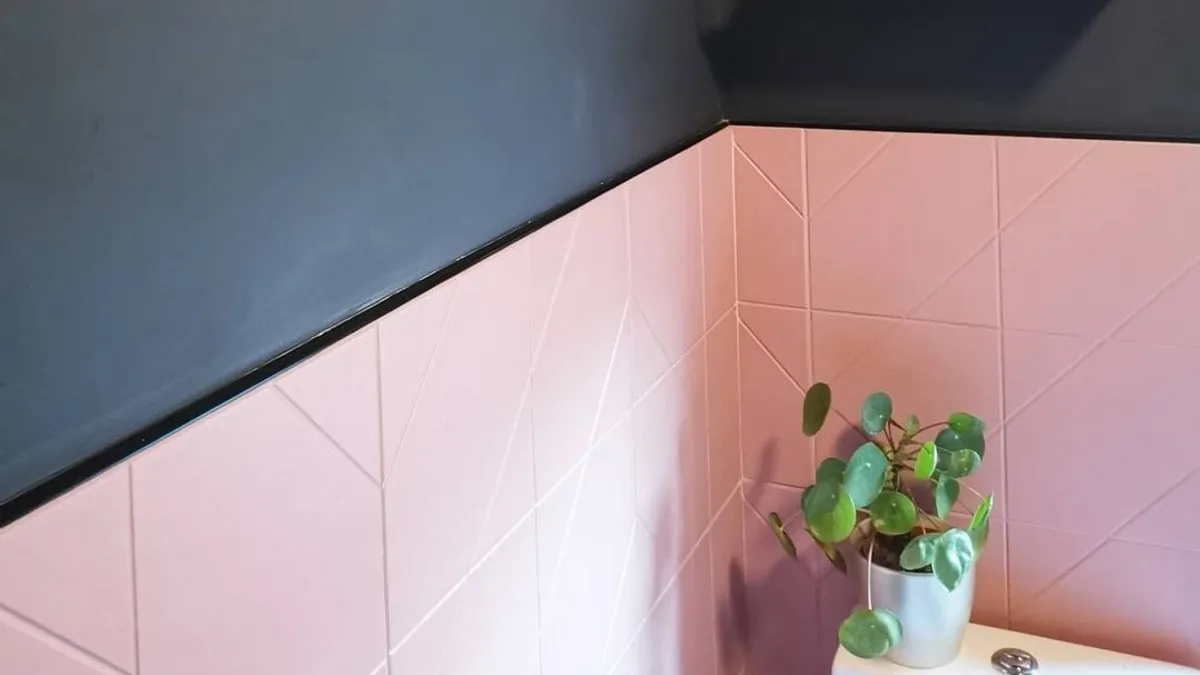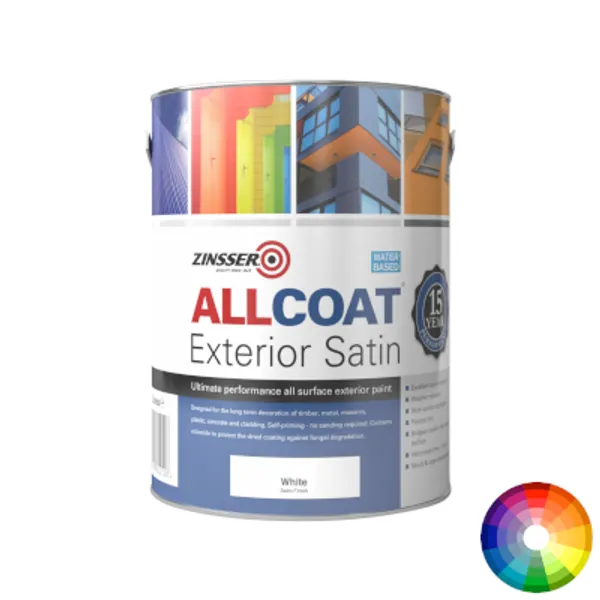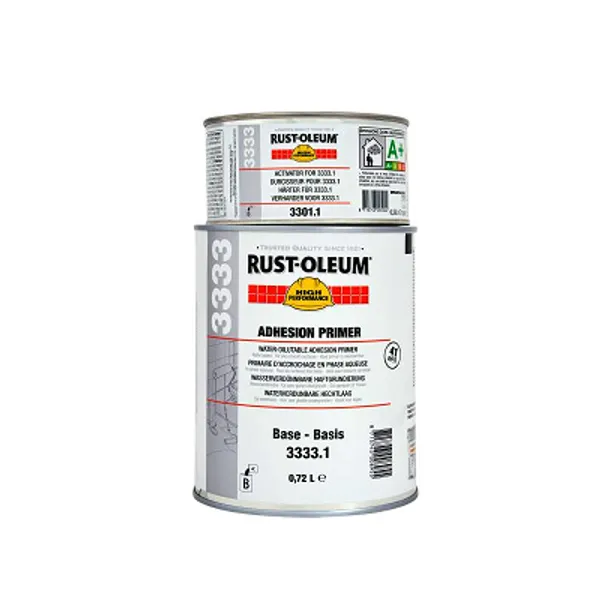The Best Tile Paint & How To Use It
Finding the best paint to use for a decorating project can be a difficult task as where do you start? With years of experience in the painting & decorating trade, our experts are always on hand to give the latest advice on what products to use. That is why they have put together this handy guide to the best tile paint & how exactly to use it, so you can find out how to go about painting tiles in the easiest and longest-lasting way.

Can You Paint Tiles?
We get asked a lot here at Painters World, can you paint tiles? The answer is simple, yes you can. Tiles used all over the house in rooms such as bathrooms and kitchens are made from ceramic, porcelain & other materials that can be painted if properly prepared first. Tiles are known as a hard to treat surface due to their highly glossy finish that can make it difficult for paint to adhere. This is similar to materials such as metal, that is another surface that can be painted contrary to what some believe.
The problem with painting tiles is that it is not a long-term solution. If you want a long-lasting finish, the only real way to achieve this is by re-tiling completely. This is because paint on any surface will begin to deteriorate over time, but especially on surfaces that be more susceptible to wear and tear like tiles.
Tiles can be painted using a multi-surface paint that is specially to be applied to a wide range of surfaces including metal, plastic, wood, masonry & UPVC.
Should You Paint Tiles?
If you are unsure whether painting tiles is for you, here are the main advantages & disadvantages you need to consider:
Advantages of Painting Tiles
- Painting tiles is cheaper than replacing them
- Painting causes minimal disruption, while replacing them can cause or could unearth issues
- Paint comes in a range of colours and finishes meaning you can achieve any look you desire
Disadvantages of Painting Tiles
- Painting will cover the grouting of tiles unless you paint this too
- Paint on hard to treat surfaces will not last as long as other surfaces, although when done correctly you can extend this lifespan as much as possible
- You must use a specialist paint that can be applied to any surface or specifically tiles
What Is The Best Paint For Tiles?
If you have considered thoroughly whether painting tiles is the best option for you, the next step is to find the best paint for the job. While the majority of tiles are found on walls, such as bathrooms & kitchens, there are many people who want to paint floor tiles. For this reason, we will first talk about the best paint for wall tiles, then move on to the best paint for floor tiles.
The Best Paint For Wall Tiles
Primer
When it comes to painting tiles, you must apply a primer to the tile before painting to improve the overall adhesion of the paint. A primer creates a layer on the tile that allows the paint to stick to the surface much easier. This not only makes it easier to paint but will extend the lifespan of the paint. But what primer should you use on wall tiles? Our experts highly recommend Zinsser Bullseye 1-2-3 which is a universal interior water-based primer that offers fantastic adhesion to any surface, including glossy surfaces like tiles.
It is quick drying, low-odour and contains a biocide that protects primed surfaces against fungus, which is why it is perfect for use in high-humidity areas such as bathrooms and kitchens. With one coat applied, Zinsser Bullseye 1-2-3 will perfectly prepare your ceramic or porcelain tiles, ready to be painted.
Paint
Once you have your primer, you then need a paint to apply onto this. As we have mentioned, it is important to use a multi-surface paint on tiles. An ordinary interior emulsion paint will not offer the best performance when it comes to glossy tiles.
There are a number of tile paints that are readily available in the large DIY stores across the UK. Many of these paints are what are referred to as 'retail paints'. Many major manufacturers have two versions of their paints, a trade paint and a retail paint. The retail paint is more often than not poorer quality, less durable and is generally marketed at specific tasks, such as tile paints or bathroom & kitchen paints. The reality is, these a simply either multi-surface paints or emulsion paints that offer less performance than their trade versions. While you can get cheaper tile paints on the market, we would recommend you use the best quality paint possible to ensure that you get the best performance. Often a cheaper paint is a false economy as they fail much quicker than high-quality paints, meaning you will have to not only buy the paint again, but spend the time repeating the decorating process. Doing it correctly first time round saves you time and money,
When it comes to a multi-surface paint, there is one product that is hugely popular and for good reason. Zinsser Allcoat is a product that offers everything you could ask for in a multi-surface paint. Firstly, it is extremely durable with a 15 year lifespan. It also offers excellent resistance against cracking or flaking and due to its weather resistance, is more than up to the humidity of a bathroom. While it is an exterior product, this does not mean it can't be used indoors. It is simply designed to withstand the weathering that an exterior paint must endure, which benefits it with added durability. Overall, it is the best chance you have of achieving a long-lasting painted porcelain or ceramic tiles.
The other reason we would recommend Zinsser Allcoat is that it provides fantastic flexibility in terms of the look you can achieve. It is available in matt, satin & gloss finishes. These finishes vary in their level of 'sheen', also known as the amount of light they reflect.
- Matt - a flat finish that offers the least amount of sheen. Perfect for a modern look, especially when used in shades such as dark greys, black or bright colours such pinks or oranges
- Satin - a high sheen finish that can offer a good level of sheen for tiles no matter where they are used
- Gloss - a traditional finish for tiles that can make rooms look more light & spacious
Finally, Zinsser Allcoat can be mixed to any colour you want with the paint mixing service here at Painters World. This allows you to pick any colour you want when it comes to painting tiles, which is something you can't get when re-tiling. This includes RAL, British Standard & NCS colours, as well as equivalent shades of almost all paint manufacturers, including designer shades. If you have the name of the shade, you can get it in Zinsser Allcoat.
Whether you are painting bathroom or kitchens wall tiles, Zinsser Allcoat is the perfect paint.
The Best Paint For Floor Tiles
Painting floored surfaces requires a different paint to a walled surface as floors must endure footfall. This added wear means that the paint you use must be a floor paint, which are specially designed to withstand this traffic without causing the paint to fail.
Primer
Rust-Oleum 3333 Super Adhesion Primer is a water-based primer that can be used on smooth floors such as tiles, creating a perfect bond without blasting the floor. It represents the best adhesion you can achieve, which can significantly improve the ability for a floor paint to remain adhered to the floor long-term.
It comes in a 2-pack system that once combined require just one-coat to prime tiled floors, with a coverage of 25m² per litre. If you are painting floor tiles, we highly recommend you use this if you want the best possible results.
Paint
Once Rust-Oleum 3333 Super Adhesion Primer is applied, the best floor paint to use on floor tiles is Rust-Oleum 7200 PU Floorcoat. It offers a high-quality solution for painting a range of floor surfaces in an easy to use solvent-based formulation. Aside from its durability, it has a great coverage of 9m² per litre and comes in both satin and gloss finishes.
Like Zinsser Allcoat it can be mixed in almost any colour, meaning you have complete control over the look you want to achieve. Overall, while you can get cheaper paints, the value for money you get with this product is second to none.
How To Paint Tiles
Once you know what paint to use, it is time to get painting. Each stage of our experts step-by-step guide is crucial for achieving long-lasting results, so make sure you do not miss anything.
What You Will Need
- A suitable paint
- A suitable primer
- A paint brush
- A mini-roller
- A cleaner & degreaser
- A cloth
- 120-grit sandpaper
- Masking tape
Step 1: Preparation
One of the most important steps of any decorating project, as any professional decorator will tell you, is preparation. This is particularly important with painting tiles as they do not come ready to paint like interior walls.
The first thing to do is to make sure the tiles are clean. If you do not clean the tiles before painting, dirt or dust will prevent the paint from adhering properly. You can do this using a universal cleaner & degreaser such as Zinsser Universal Degreaser & Cleaner and a cloth. Make sure you do not leave any residue behind. This step is crucially important if you are painting floor tiles, as they can easily gather grease that builds up over the years.
Next, you must ensure the surface is sound if you want to achieve a flawless finish. Check the grouting to see if it is worth re-grouting or fill any cracks using an interior filler. It is best to take the time to repair this now before painting, as having to do this in the future will mean you will have to re-paint the tiles.
For wall tiles only, you can then sand the tiles down to create a 'key' for the paint to adhere. This creates a slightly rougher surface that helps make it easier for paint to be applied to the surface without running straight off. Using a 120 grit sandpaper, give the tiles a light sand and clean with water and a cloth to ensure no dust is left.
The last thing to do is to mask the area using masking tape to ensure you get the neatest possible finish. A good-quality masking tape will prevent any paint bleed through, leaving you with razor sharp lines.
Step 2: Priming
It is now time to prime the tiles. Primers are very thin and can be easily applied using a brush or roller. Only one coat is required which also makes it a quick job. Starting at the edges using a paint brush, followed by a mini-roller to prime to bulk of the tiles.
Make sure you leave it to completely dry before painting, which can take between 1-2 hours.
Step 3: Painting
Now the important part, the painting. If you are using Zinsser Allcoat, as a water-based paint you must ensure you use a synthetic paint brush, as a natural bristle paint brush can absorb water. If painting floor tiles using the solvent-based 7200 Rust-Oleum Floorcoat, it is recommended you use a natural bristle paint brush.
We would highly recommend you use good-quality decorating tools as the finish you can achieve is far superior. The best roller for painting tiles is something small and easy to control like a mini-roller, as you do not have to cover large. Furthermore, a short-pile roller sleeve is best for smooth surfaces as it leaves the most even finish possible. We recommend using the 4" Hamilton Prestige Mini Frame with the 4" Hamilton Perfection Short Pile Roller.
Starting with your paint brush, paint around the edges with your first coat. This first coat should be slightly thinner than your second coat as this helps to create a solid base for the topcoat to be applied to. Applying too much paint on your first coat will leave you with an unsatisfactory finish.
You can then use your roller to paint the rest of the surface, ensuring you get as close to the edge as possible. This prevents what is known as the 'framing effect', which is caused by a paint brush being used on the outside of the surface. Without using a mini-roller to paint over these brush marks, you will have two contrasting finishes.
Leave to fully dry and repeat the process again with your second coat, this time slightly thicker.
Once completely dry, you could then paint your grouting in a complimentary shade such as black, which can create a beautiful look that can make all the difference.
Painting Tiles Inspiration
Looking for a bit of inspiration before you attempt to paint your ceramic bathroom, kitchen or floor tiles? Here are some of our favourite examples.
When it comes to painting tiles, the possibilities are endless. This example of painted bathroom ceramic tiles is the perfect illustration of this. A pale pink shade was used in combination with an accent line of black that completely sets off the tiles. It has personality, creativity and is a something that is completely unique.

The impact a floor can have on the aesthetic of a room cannot be understated. This project demonstrates this enormously having been transformed using Rust-Oleum floor paint. Bathrooms are a prime location for having an outdated floor, which can be instantly modernised using paint. Modern shades such as blacks or greys like anthracite grey are perfect for this.

White tiles are timeless, whether used in a bathroom or kitchen. We especially love when black grouting is used that can create a premium look that helps make the space look more modern.

We hope this has answered any questions you may have had regarding painting tiles. If you require anymore help, please feel free to send an email to hello@paintersworld.co.uk where one of our experts will be on hand to help. At Painters World we have a wide range of paints available, so no matter the job, we've got the right tools for you! Shop our huge range of products today & get FREE next working day delivery on all orders over £50.



Sign up now and be the first to know about exclusive offers, product updates, and announcements.





